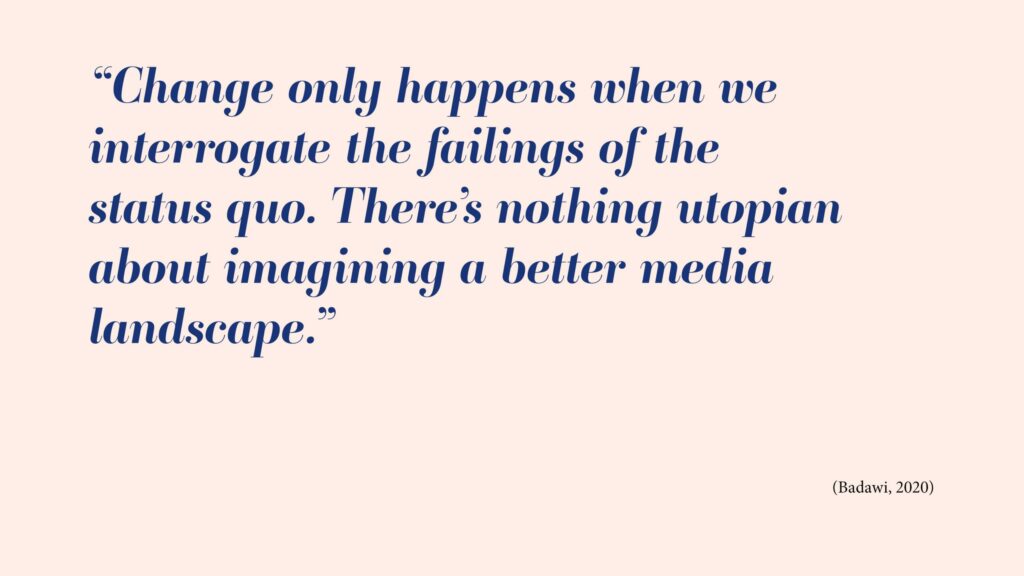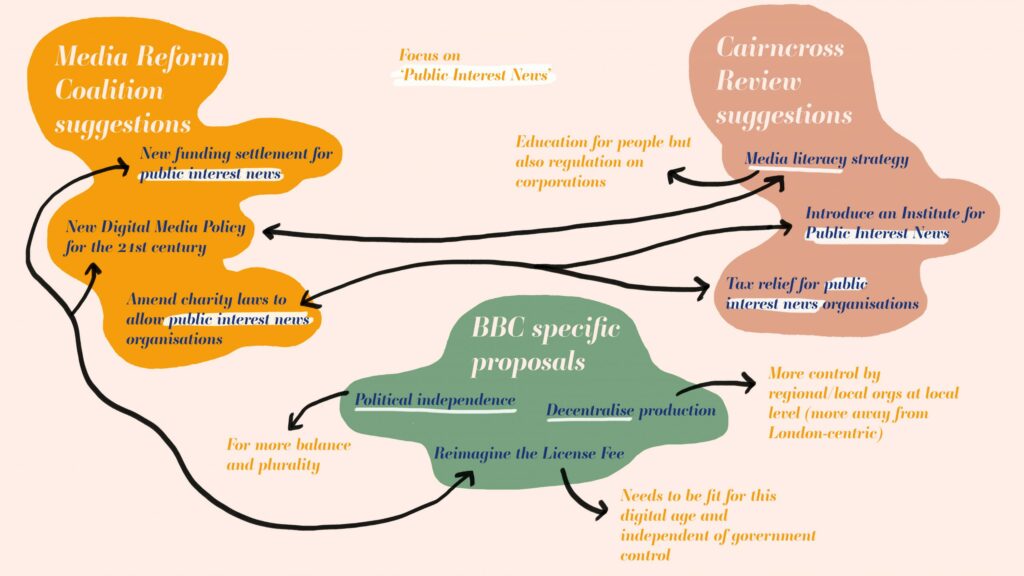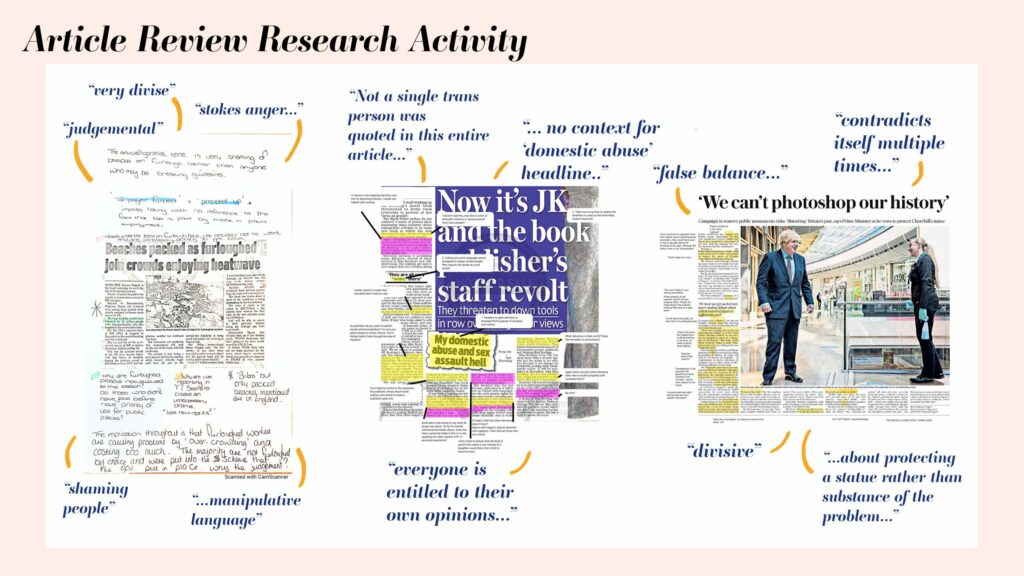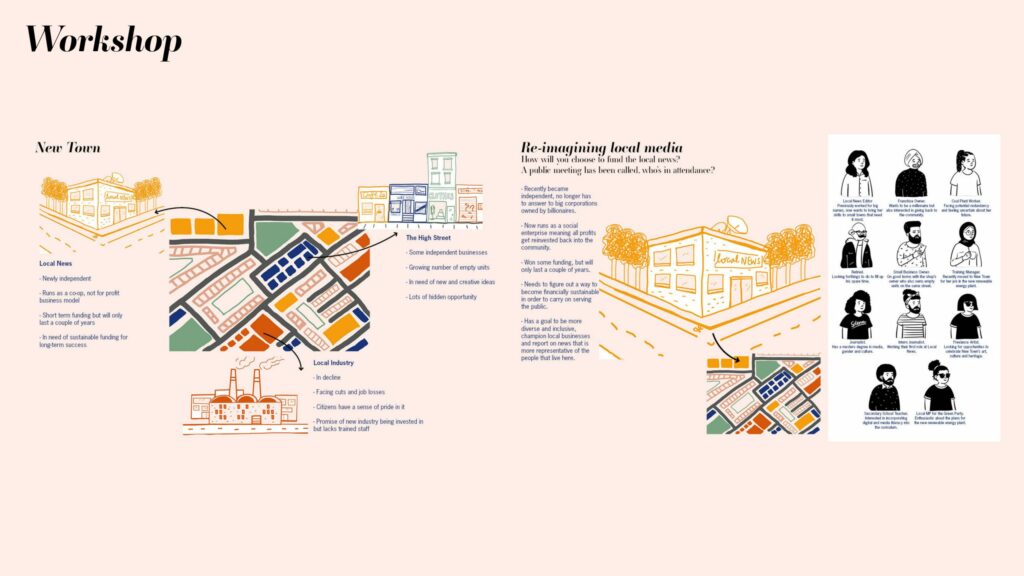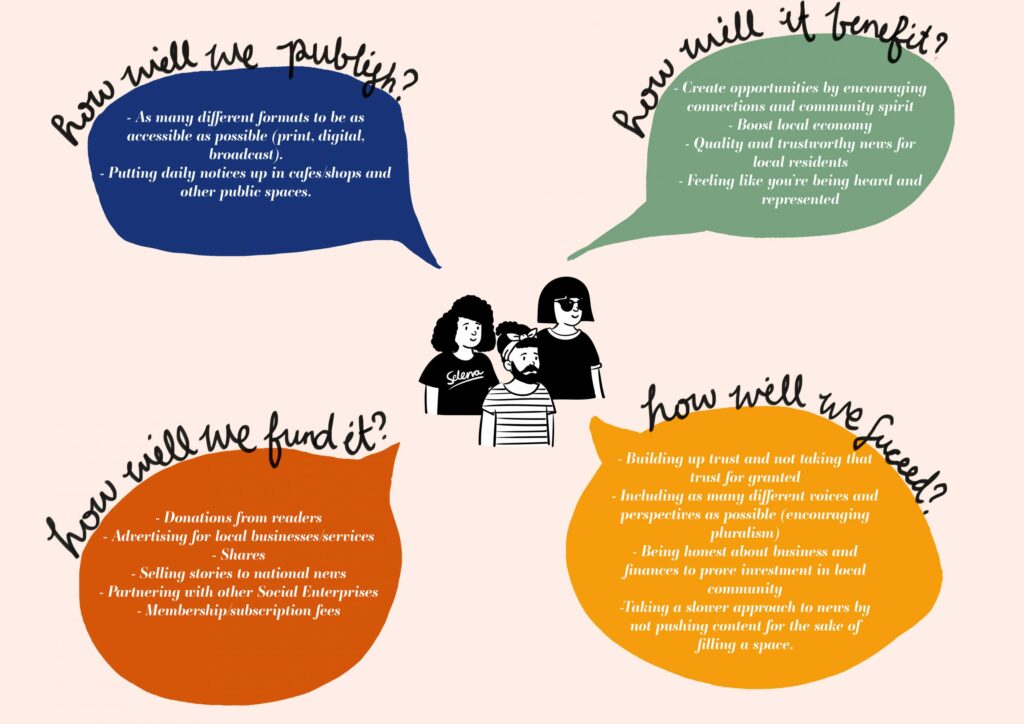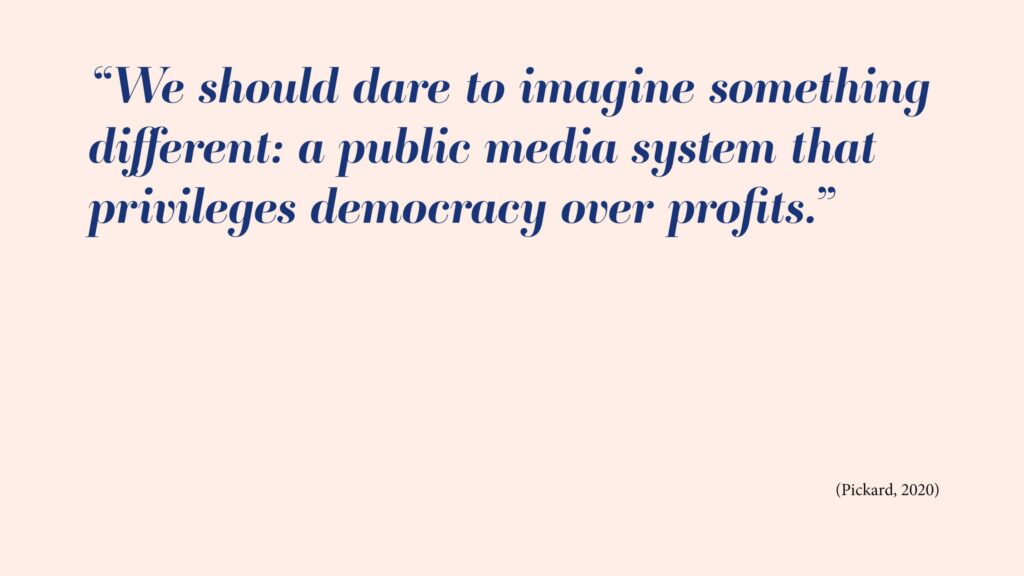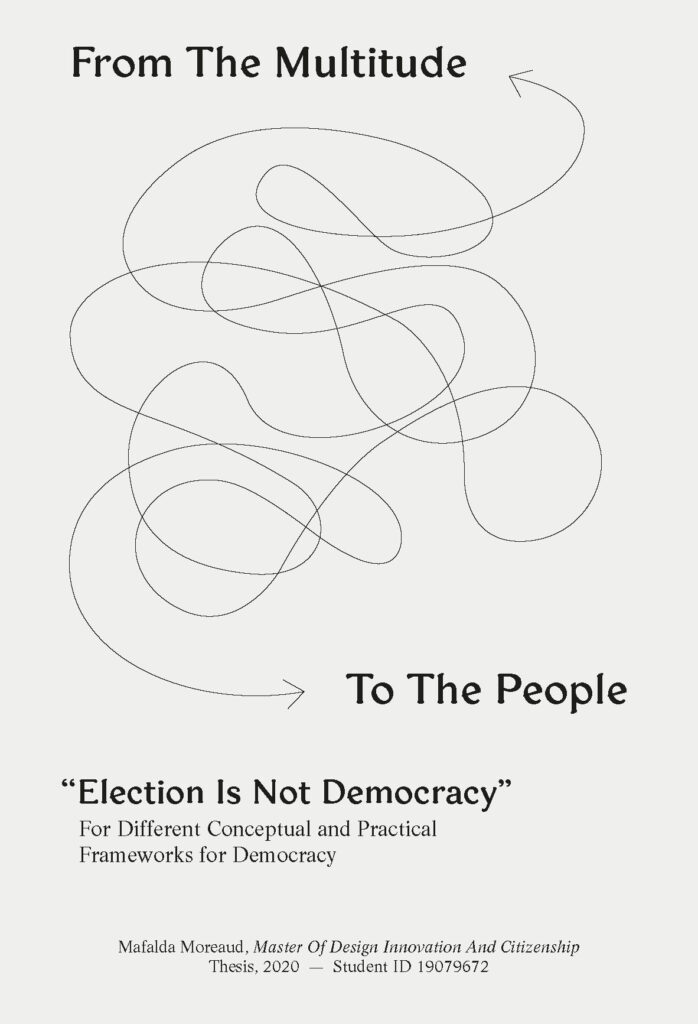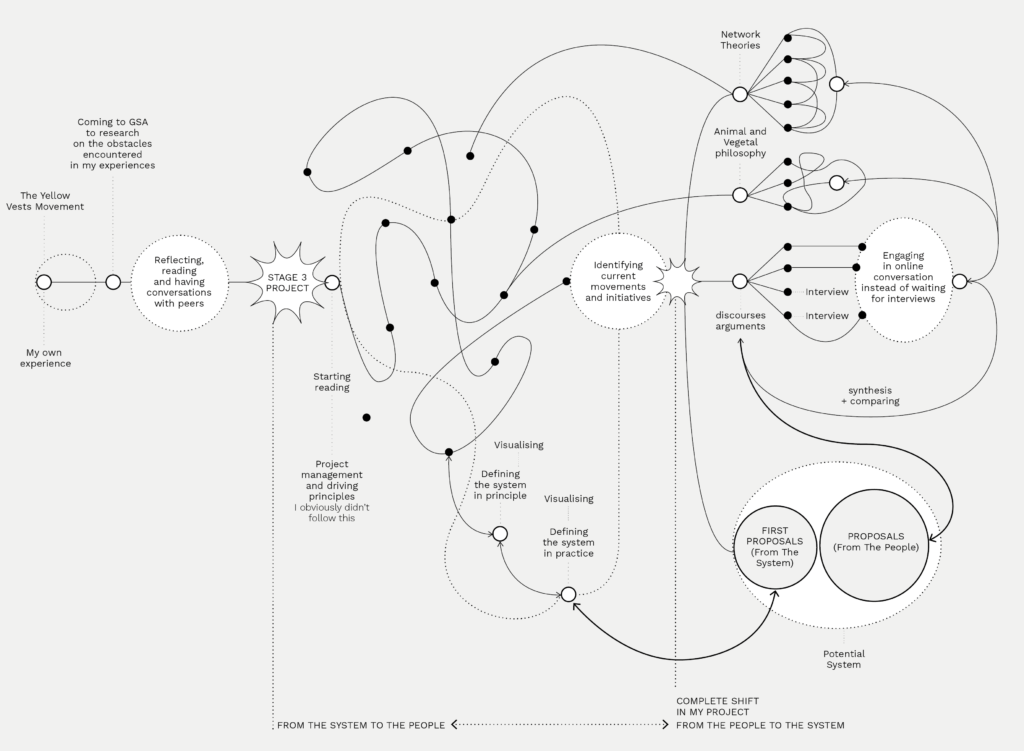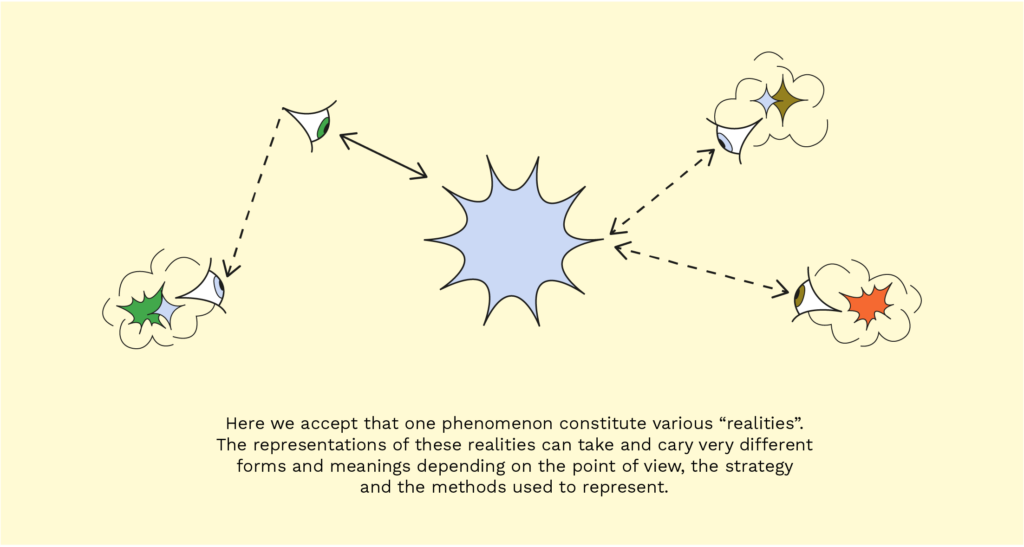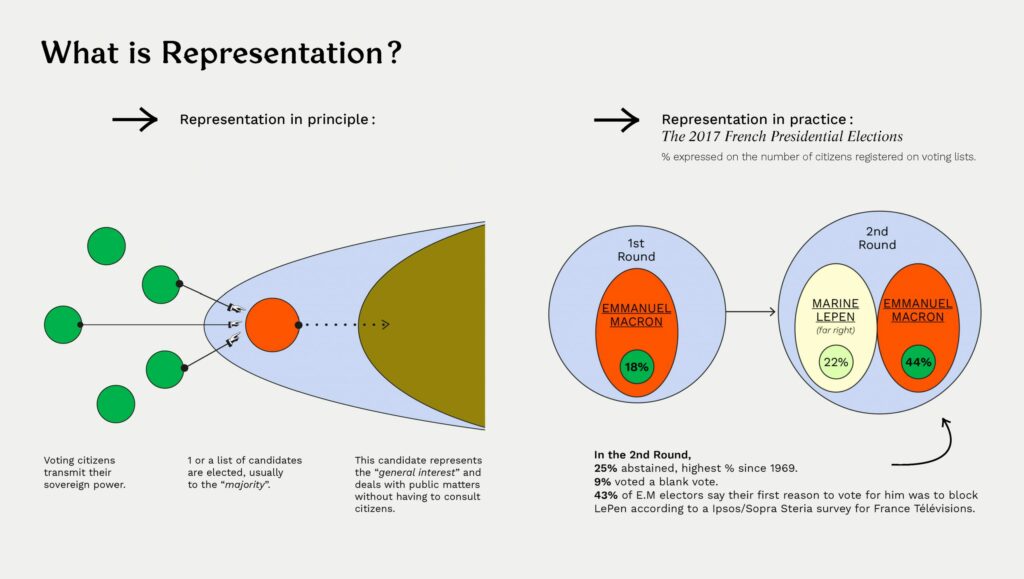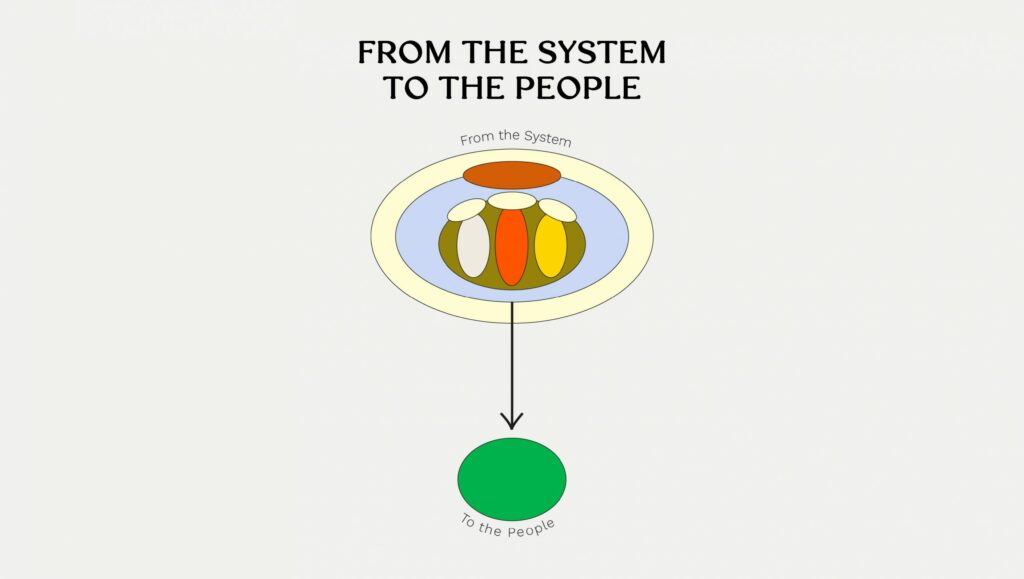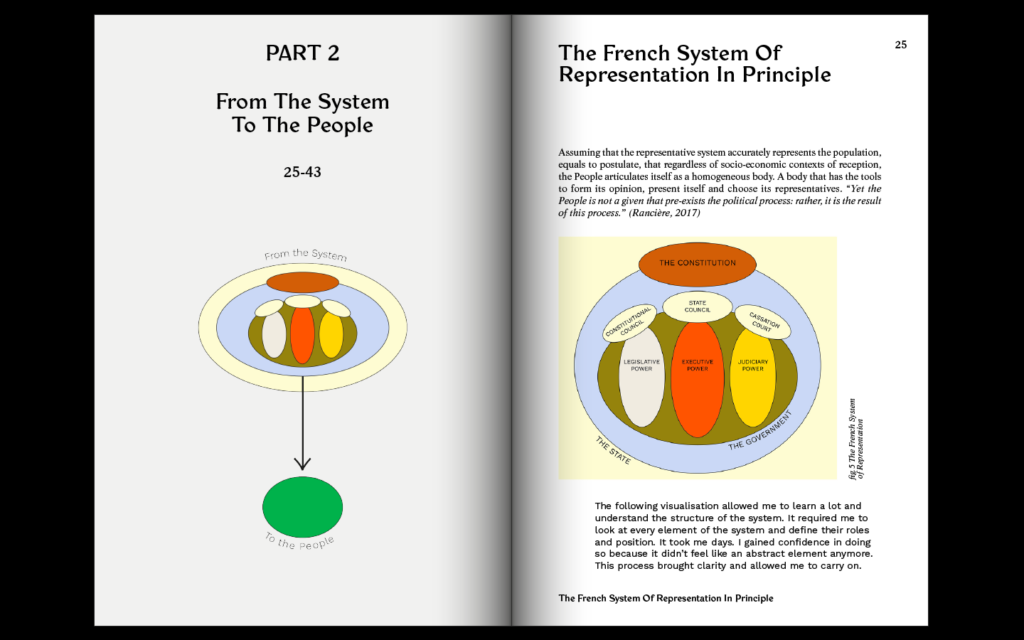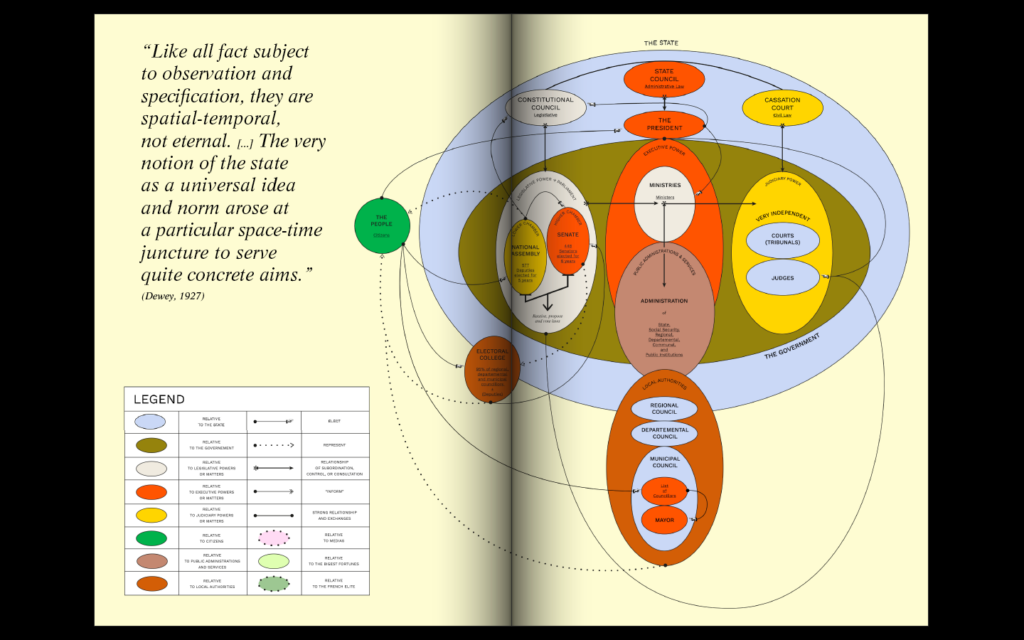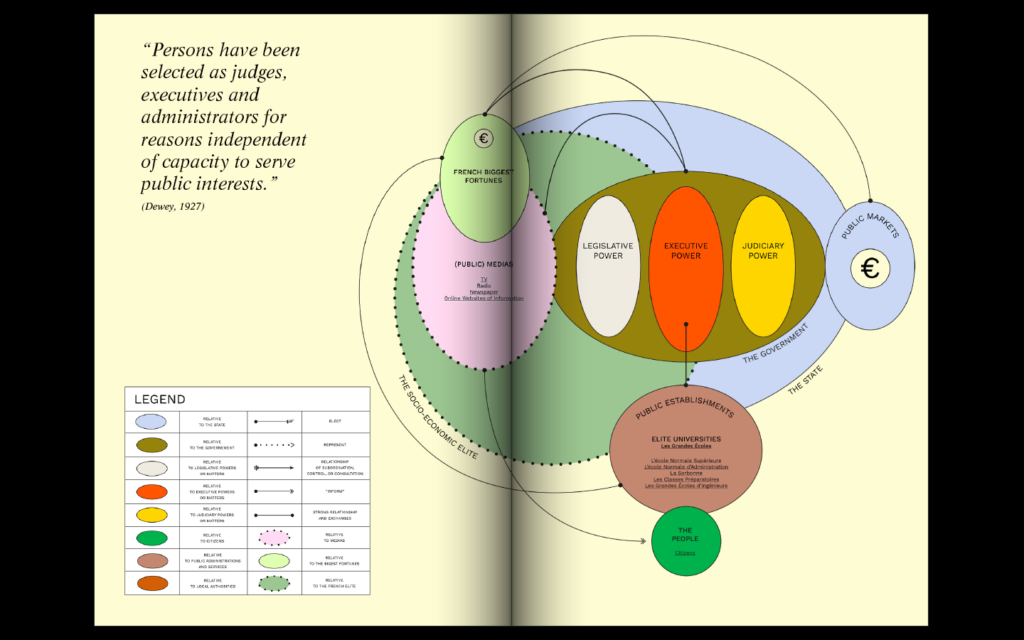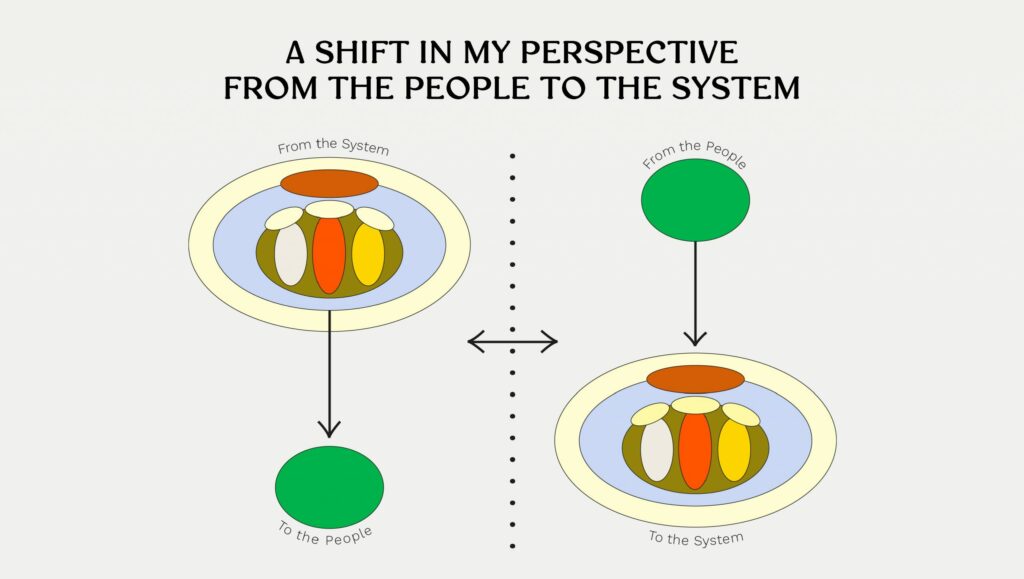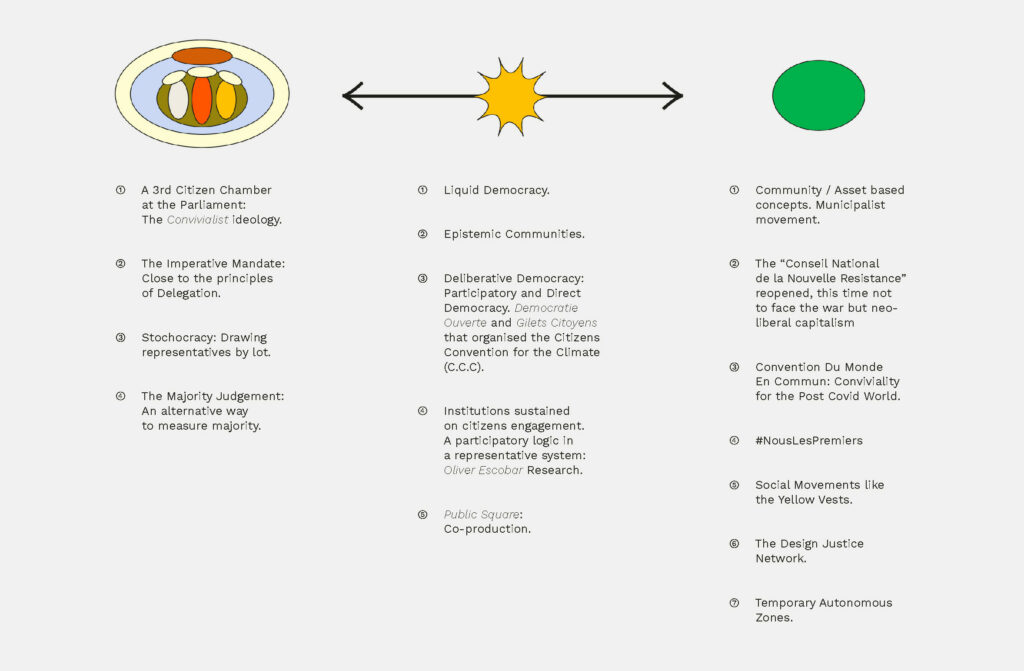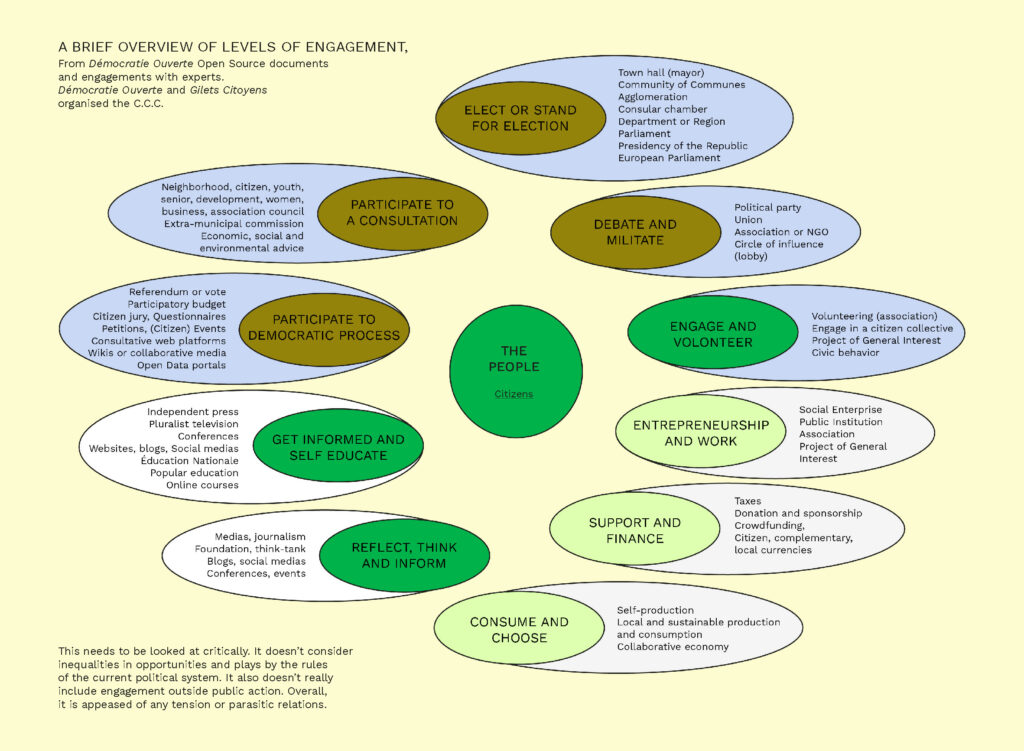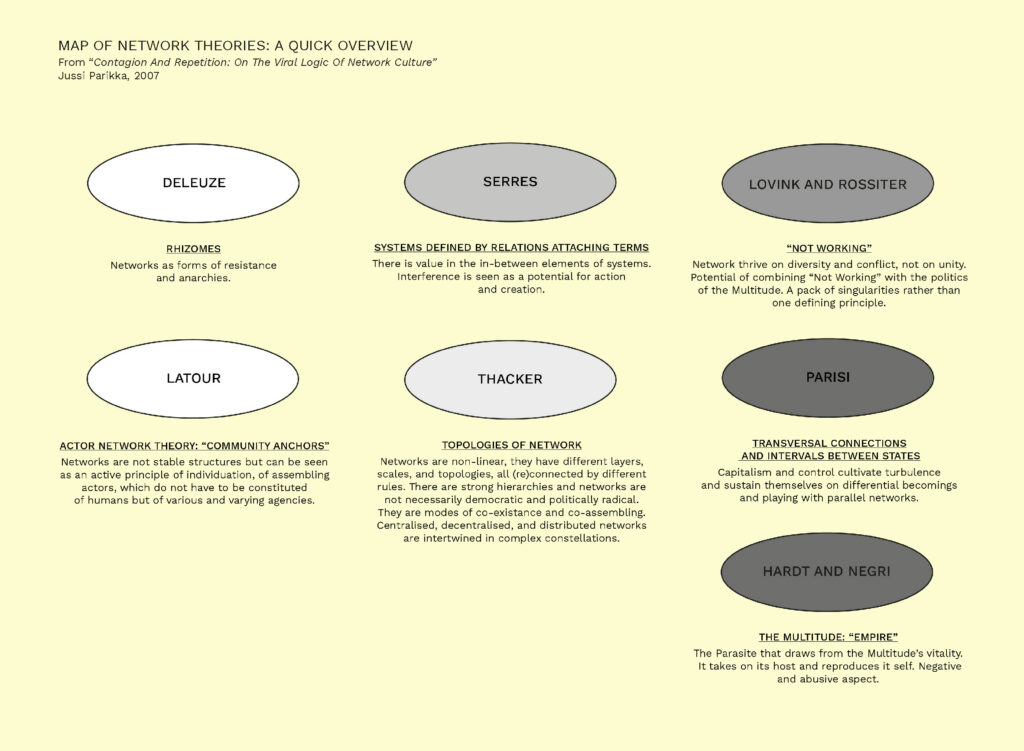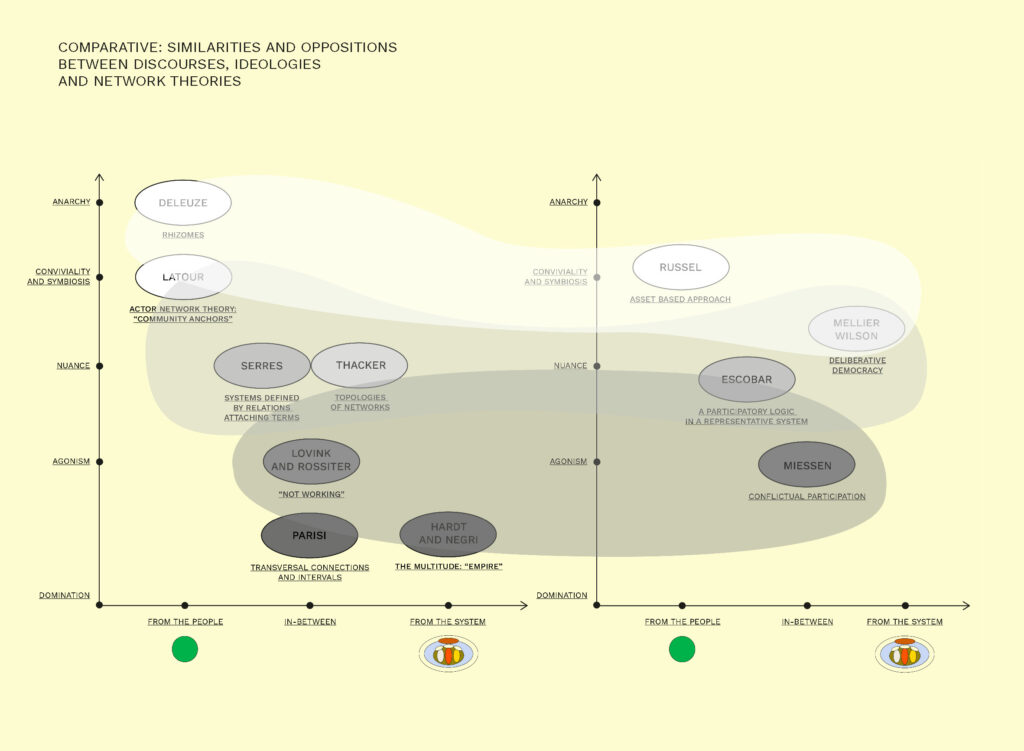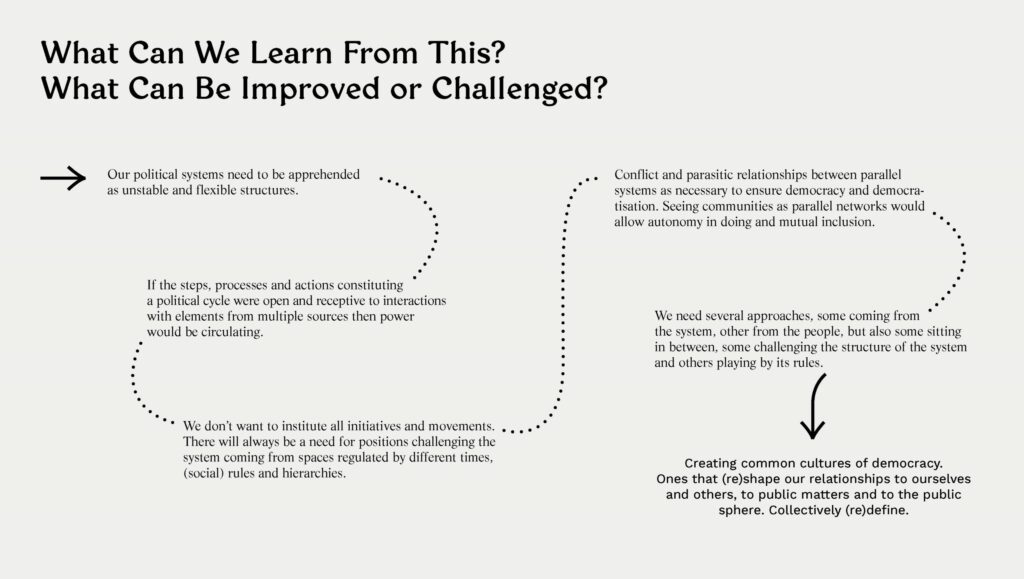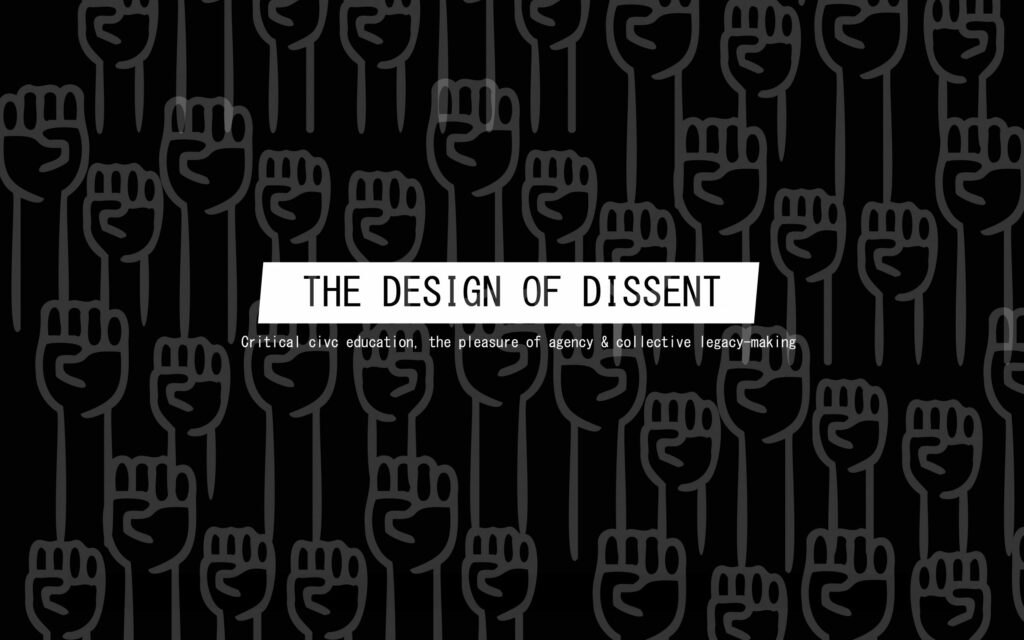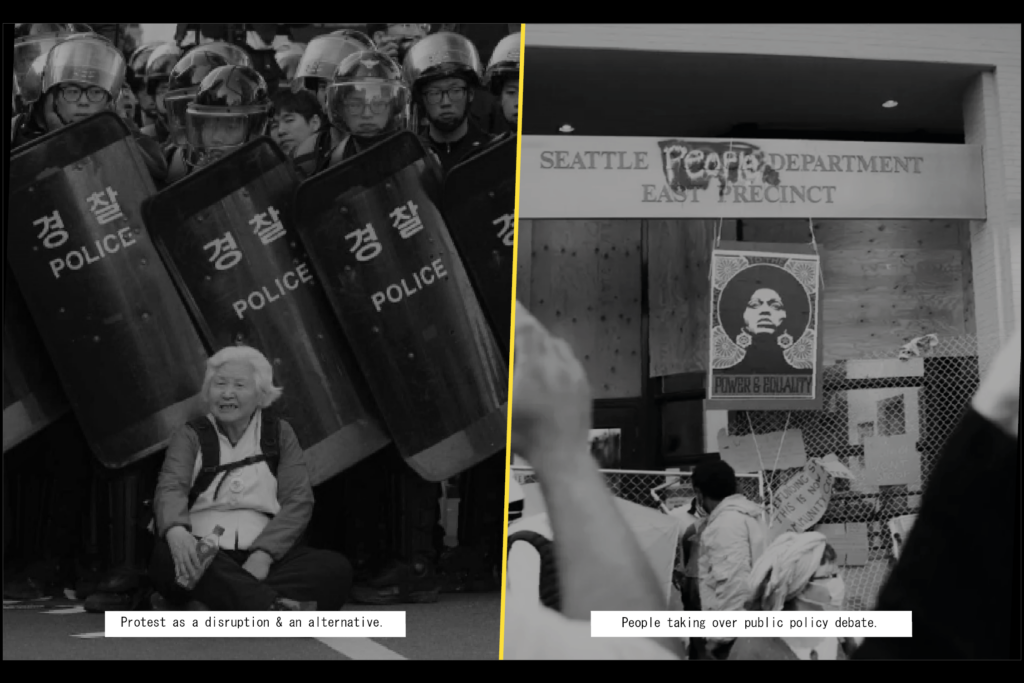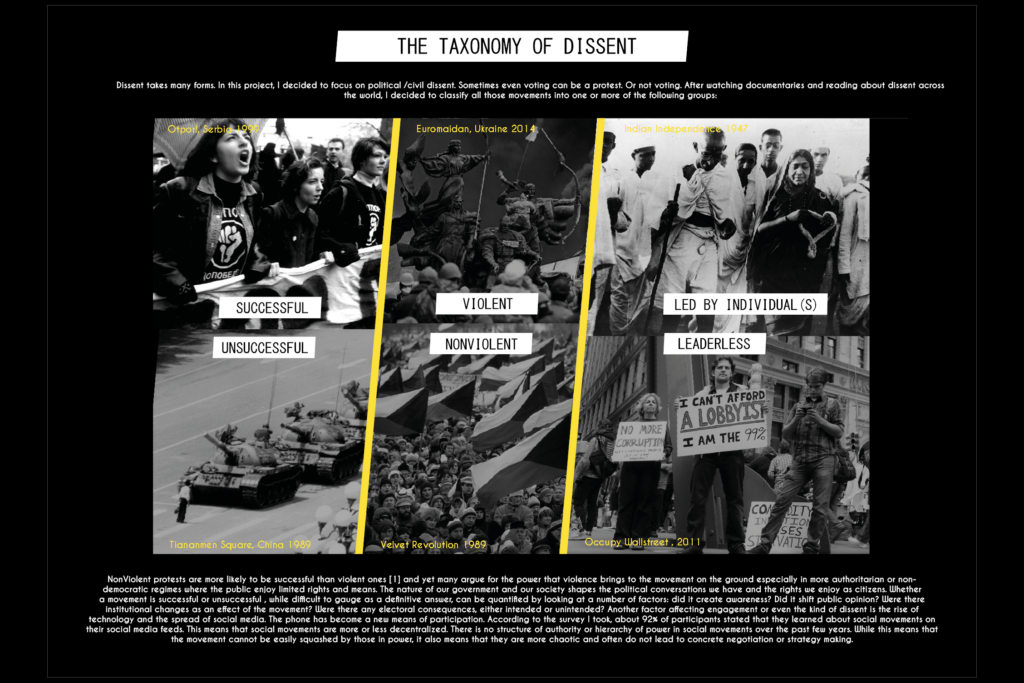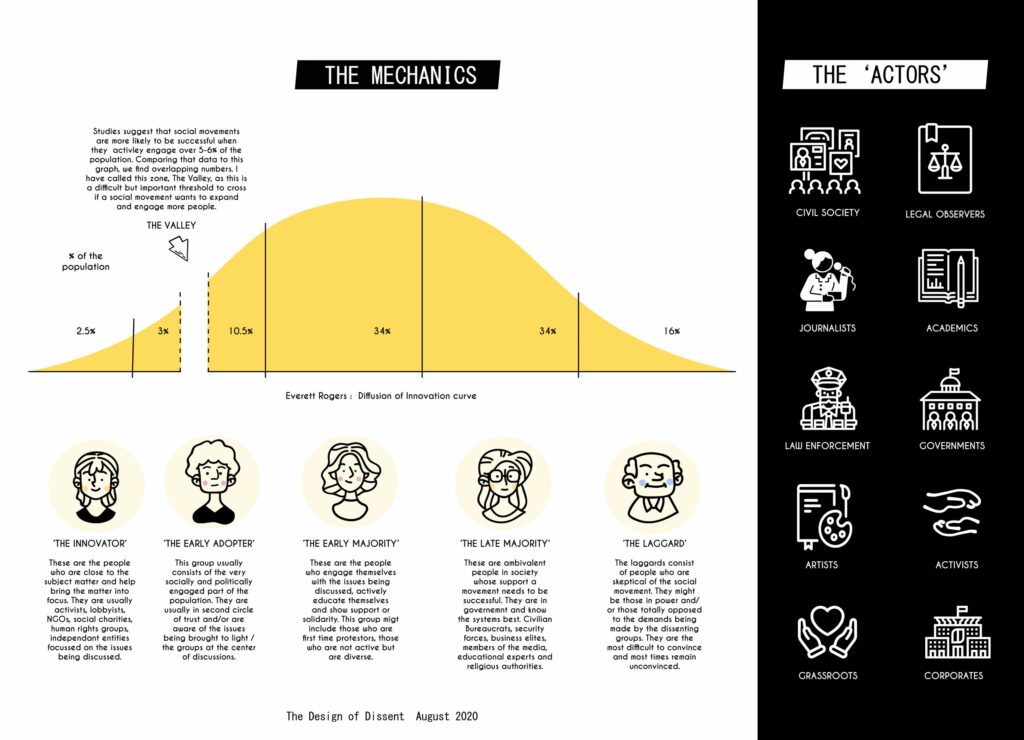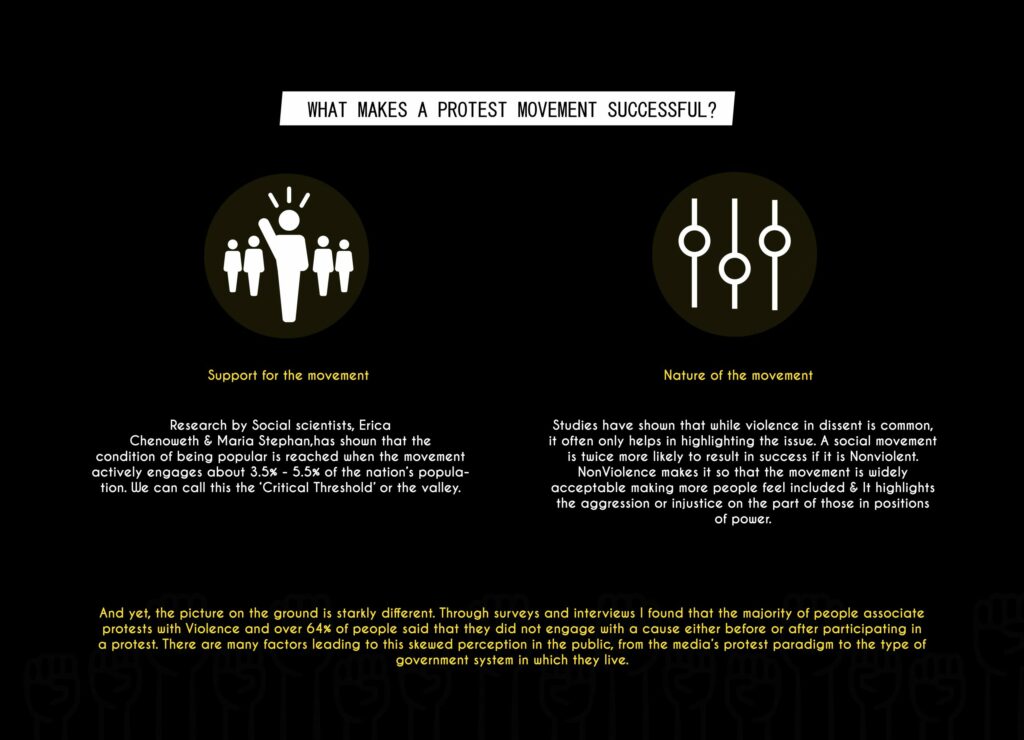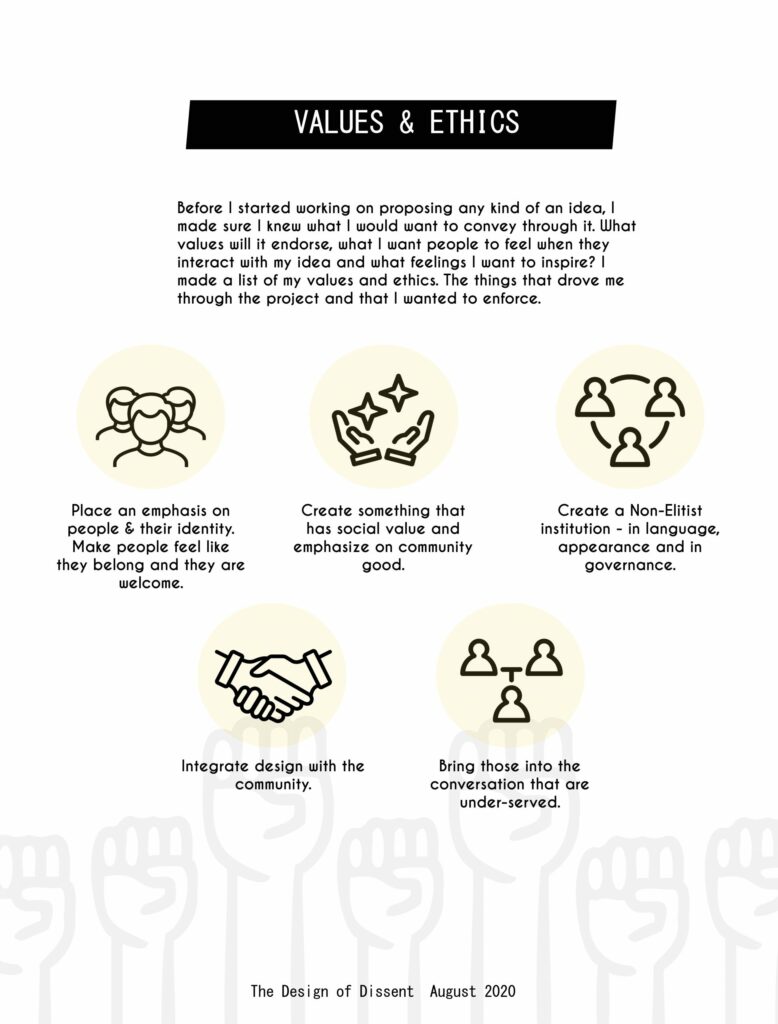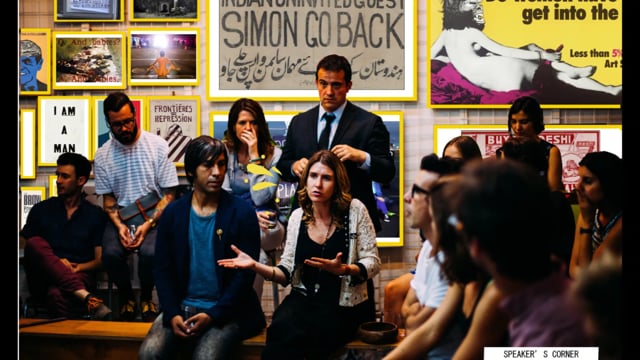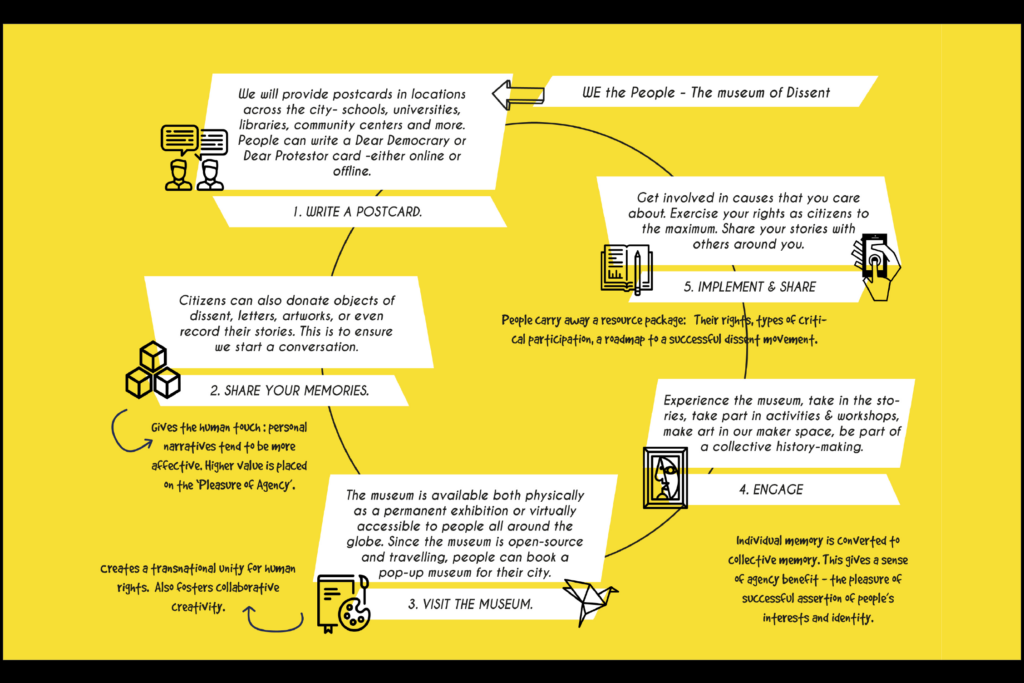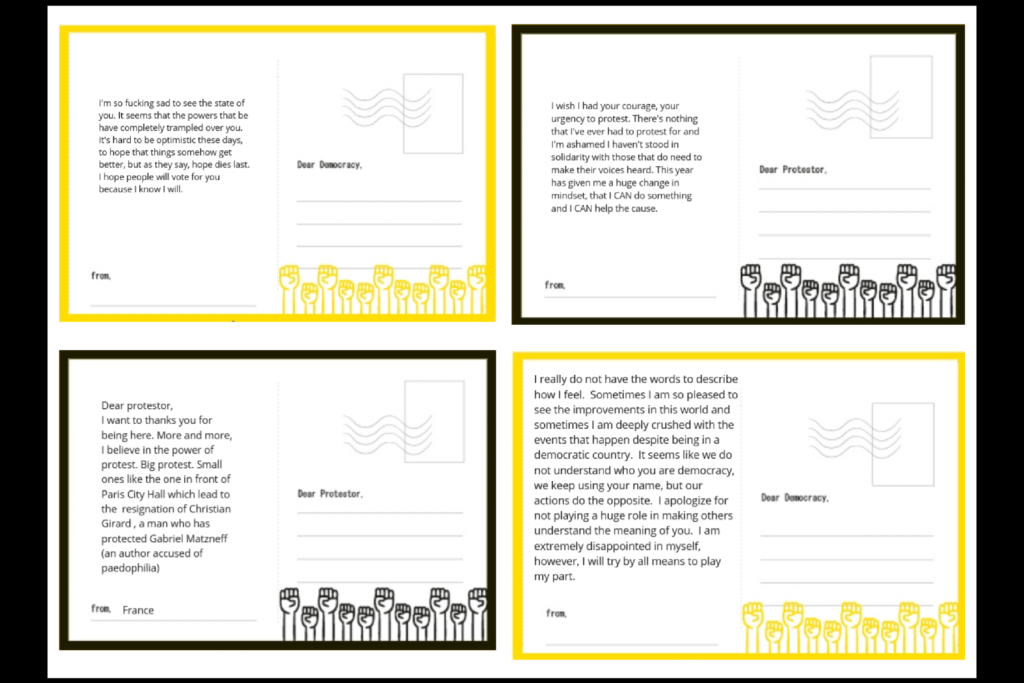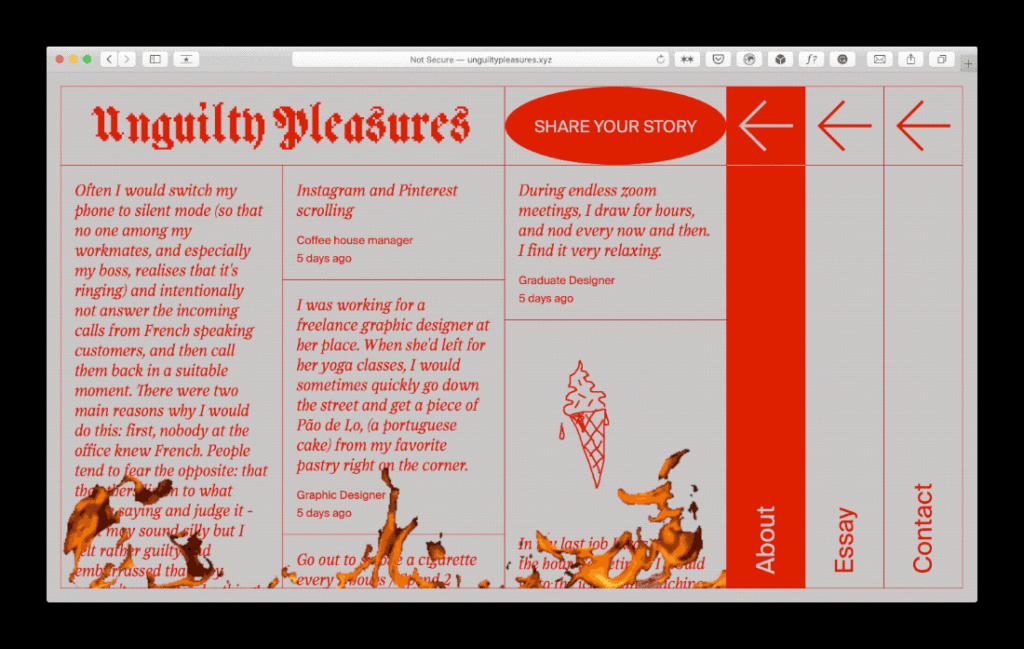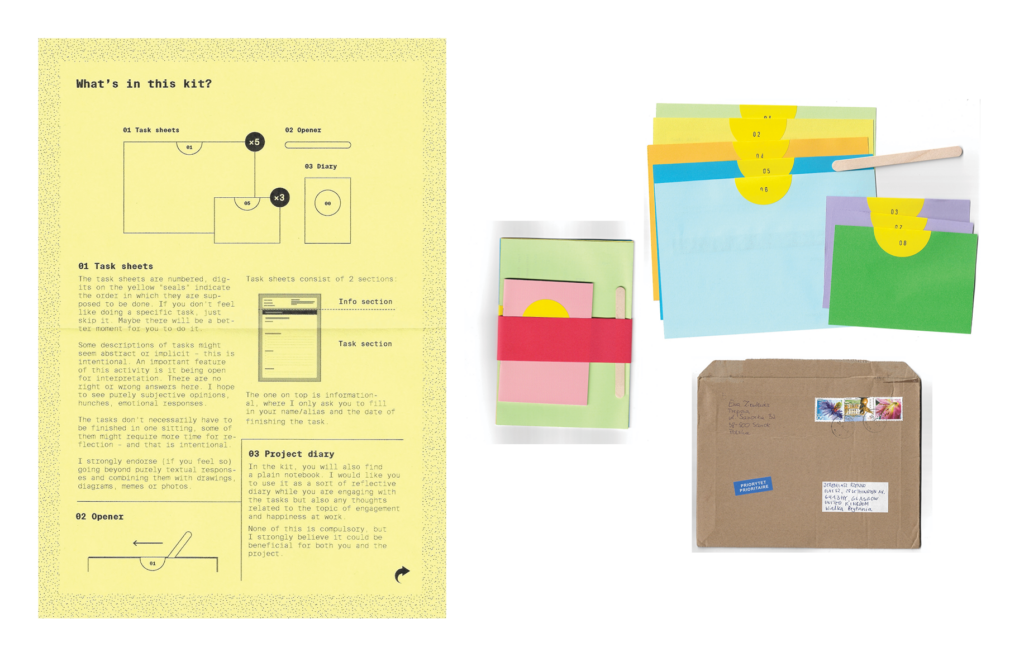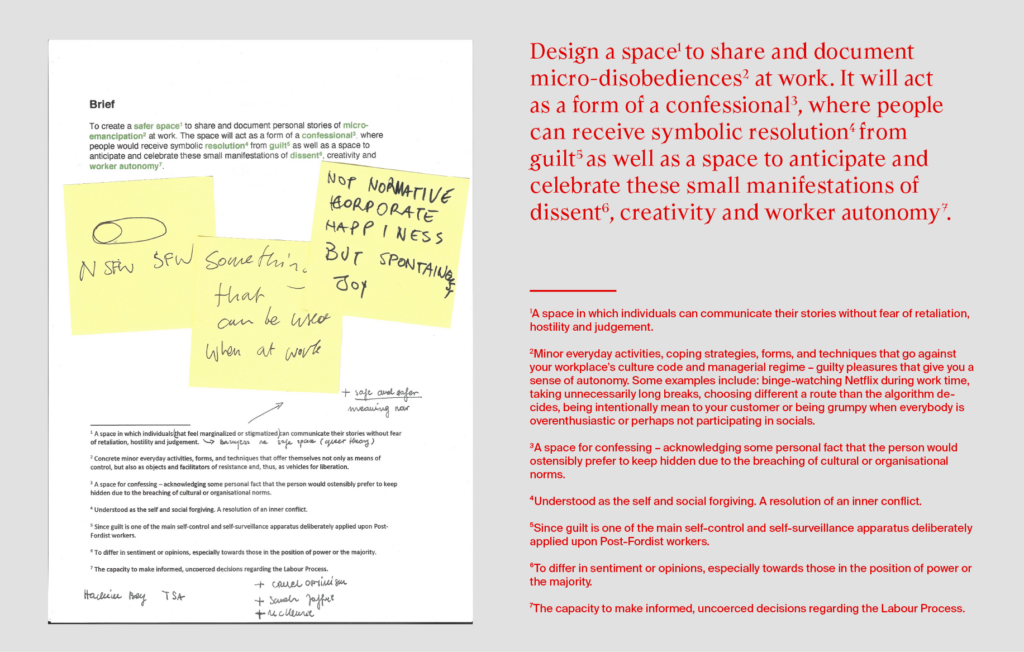Not Fit to Print: Exploring Democracy within Public Media Systems
This project looked at who owns the media, the issues with this and sought to address the problems with the current media model driven by capitalism. Alternatives do exist though and a citizen-owned media that is more reflective of their needs is certainly possible and attainable.
Citizen-owned media
Instead of a media that’s divisive it could create connections and foster a better sense of community. Instead of invoking outrage and pessimism it could promote and celebrate the everyday good whilst also being mindful of the importance of reporting the truth. Instead of voicing narrow-minded, singular views, it could be better at providing a platform for diverse voices more representative of the people it serves. Instead of an agenda set on pushing profits, it could put people first and offer more support for independent businesses to boost local economies.
Media Reform Proposals
Here I've highlighted some of the proposals put forward by the Media Reform Coalition and Caincross Review. Although there were some points I disagreed with, there were others that had credibility. For the ones highlighted here, there's a strong focus on the importance of public interest news, being independent of government and the need to redefine funding structures.
Article Review / Research Activity
In order to gain better insight into the current state of media I reviewed articles from the 'main' papers and highlighted uses of language, tone and the type of information being told/not told. I also opened up this activity to the general public to gain their thoughts and opinions too. Above, are a few of their responses. What I found was a media that's a mouthpiece for the elite, not for the people; a media that is singular and narrow-minded; and instead of holding those in power to account, they are instead given more space to voice their opinions.
Workshop / Imagining a Fairer Media in a 'Fictional' Town
I facilitated a workshop to collaborate on ideas for what a fairer media might look like. Above are some of the slides from the workshop (it had to be done virtually). To enable the discussion, I created a fictional town with characters that my particpants could discuss ideas through the lens of. I walked them through a number of different scenarios to come up with ideas on: how to fund a locally-owned media, how to report on stories, and how to publish these stories. We also discussed what some of the future impacts these decisions might have. The town, characters and scenarios were all created based on the research I'd done so far, so although fictional they're also probable. This workshop enabled me to include more voices than just my own and to come up with ideas outside of my own biases.
Above are some of the ideas that came out of the workshop. There was a lot of focus on being accessible, diverse and inclusive.
Future Work
The work I've been doing doesn't feel complete yet and there are many other avenues which I didn't get the chance to fully explore. Talk of media reform is an important one, we can't continue to accept the current system of profits of people and a media filled with lies and misinformation set only on pushing the agendas of the rich and powerful. We need better platforms to have a voice, be represented and be able to hold those in power to account. Concentrated media ownership has led to singular, narrow-minded views and will continue to do so as long as they can get away with it. It's time for a change and we should dare to imagine something different.


